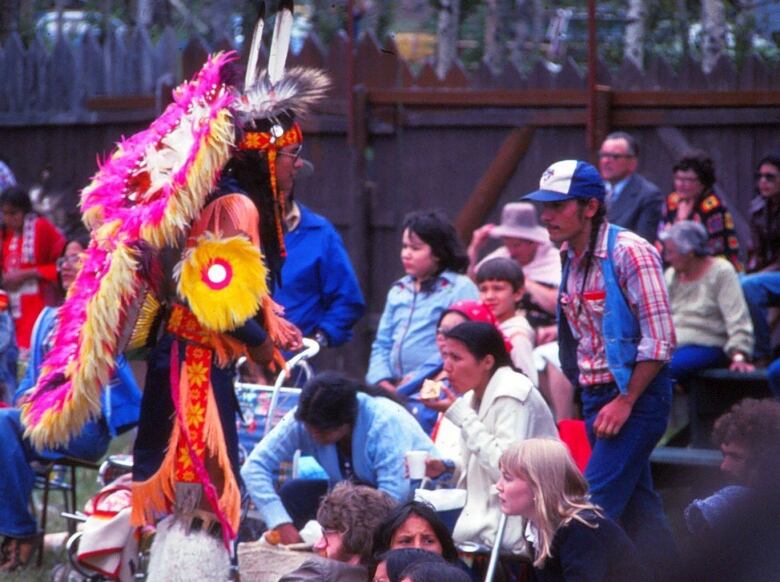'Sort of a beginning' of things changing: Memories of a 1978 powwow in Fort William First Nation
A series of photos on Facebook shows the celebration on Anemki Wajiw
Forty years ago near Thunder Bay, Ont., dozensof people gathered at the top of Anemki Wajiw for a powwow and celebration of the Anishinaabe culture.
Allan Manitowabiwas then a 22-year-old man visiting the Lakehead for the first time. Invited by his friends, Manitowabi said he came to the Fort William First Nation's powwow in 1978 at the mountain, also known as Mount McKay, to sing with his friend's drumming group.
"It was my first time to the Mount McKay powwow to visit the Fort William reserve," Manitowabisaid. "I noticed in the picture there was a good friend of mine, who I met maybe six months prior ... and had always invited me to come on up."

He said he felt like it was the beginningof things changing in the Thunder Bay area when he visited, as powwows are a way of teaching and sharing the Indigenous culture and way of life.
"I think there was sort of a beginning of things to change, I believe," Manitowabi said. "I think with people coming to the powwows, I think they were getting to see things first hand."
'Much bigger than I ever expected'
Amateur photographer Ron Spence said he decided to attend the 1978 celebration with his wife, who was from Sweden, after she expressed some curiosity about the event.
"I said let's go up there and see what's going on," Spence explained. "There was a large gathering of people [and] it was much bigger than I ever expected," adding that there were people who came from all across Ontario, Manitoba and even the United States.

He said he had heard about powwow celebrations before but never attended one or knew much about them.
"It was an eye-opener for me and it was even a bigger one for my wife because she's from Europe [and] hasnever seen anything like this before," Spence said.
"She remarked to me later that she was the only blonde person in the entire crowd."
Spence said it was "shocking" to see how much culture the Indigenous people had preserved.
"Thunder Bay was a Native community, and it is today ... and we had really zero exposure to their culture, like when I was growing up going through high school and public school," Spence said."We didn't know anything about any of their traditions or culture, at all, period. It was a big, big shock."

He said the relationship between the Indigenous people and non-Indigenous community "was like apartheid."
"They had their own schools, they had their own community," Spence explained."There was almost zero interaction between the white community and the Native community at that point ... I couldn't even say that I even hada conversation any more than a hello with a Native person growing up."
Despite that, Spence said the powwow was such an "unforgettable event," that he and his wife attended several more after that and brought their children along when they were young.
Much richer culture than we know
Growing up on Manitoulin Island, Manitowabisaid powwows had been going onin that region since the 1960sand although there weren't very many during that time, the practice has grown over the years.
"We still got ways to go but it sure has changed in the 40 years," Manitowabisaid.
"I was just a young man who was just learning [and] I had a lot to learn about our teachings too, [but] I can sit back and smile and say, 'you know, look where I came from.'"

He said life expectancy for Indigenous people in 1978 was "veryshort," and he's thankful to still be around to enjoy life with his children and six grandchildren.
"The resurgence of our culture, I think, was what was happening at the time,"Manitowabisaid."I think the more they talk about it, the more they can learn and understand and understand the history and that it wasn't all bad."
"I think that's important."












_(720p).jpg)


 OFFICIAL HD MUSIC VIDEO.jpg)
.jpg)



























































































